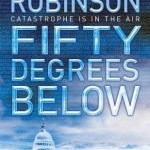Bangladesh
At the Center for Public Integrity, Jim Morris reports on working conditions at the nation’s oil refineries, writing that more than 500 refinery incidents have been reported to the U.S. Environmental Protection Agency since 1994, calling into question the adequacy of EPA and federal labor rules designed to protect workers as well as the public. Morris begins the story with John Moore, who in 2010 was working at a Tesoro Corporation oil refinery north of Seattle — he writes:
Up the hill from Moore, in the Naphtha Hydrotreater unit, seven workers were restoring to service a bank of heat…
At the Center for Public Integrity, reporters Jim Morris and Maryam Jameel investigate the nation’s “third wave” of asbestos-related disease. The story begins with two photos of Kris Penny, who used to install fiber-optic cable beneath the streets of Florida.
The first photo is of Penny in April 2015, looking healthy and happy. The next photo is one taken just six months later. Penny looks dramatically transformed after being diagnosed with peritoneal mesothelioma, a rare cancer of the abdominal lining that’s nearly always related to asbestos exposure. After talking with a lawyer, Penny…
Human caused greenhouse gas pollution is heating the Earth and causing the planet’s polar ice caps and other glacial ice to melt. This, along with simply heating the ocean, has caused measurable sea level rise. Even more worrisome is this: the current elevated level of CO2 in the atmosphere was associated in the past with sea levels several meters higher than they are today. Even if we slow down Carbon pollution very quickly, we can expect sea levels to be at least 8 meters higher, eventually. How soon? Nobody knows, nobody can give you a time frame on this because the rate of melting of the…
February 7th marked two grim anniversaries of explosions that demonstrate the toll of unsafe workplaces. On February 7, 2008, an explosion and fire at the Imperial Sugar refinery in Port Wentworth, Georgia, killed 14 workers and injured 28 others. On February 7, 2010, an explosion at the Kleen Energy facility in Middletown, Connecticut, six workers were killed and at least 50 others injured.
The US Chemical Safety Board investigated both explosions. It determined that the Imperial Sugar explosion was fueled by a massive accumulation of combustible sugar dust, and that the Kleen Energy…
In case you missed it before the holidays, ProPublica's excellent "Temporary Work, Lasting Harm" piece is well worth a read. (Univision also produced and aired a version of the story.) Michael Grabell, Olga Pierce, and Jeff Larson tell the story of 21-year-old Day Davis, a temporary worker killed on his first day working at a Bacardi bottling plant, and others who died while on temporary work assignments. A ProPublica analysis of workers' compensation claims in five states found that temporary workers face a significantly greater risk of on-the-job injuries compared to permanent employees.…
This month's issue of EHS Today includes a special section on Bangladesh factory safety, a topic that has continued to attract news coverage following the April collapse of the Rana Plaza building, which killed more than 1100 workers. Sandy Smith's introductory article summarizes some of the international efforts aimed at improving working condition in Bangladesh, including support of the Bangladeshi National Action Plan for Fire and Building Safety and two different retailer initiatives.
Scott Nova critiques existing factory inspection programs for "their abject failure to provide basic…
Chemical Safety Board Chair Rafael Moure-Eraso testified before the Senate's Environment and Public Works Committee regarding its preliminary findings on the West, Texas fertilizer plant explosion that killed 15 people in April. Ramit Plushnick-Masti reports for the Associated Press:
"The safety of ammonium nitrate fertilizer storage falls under a patchwork of U.S. regulatory standards and guidance — a patchwork that has many large holes," according to the report presented to the panel by Rafael Moure-Eraso, the board's chairman.
The board, which has no regulatory authority, recommended in…
Last week, the Senate Judiciary Committee approved immigration legislation that would overhaul US immigration laws. Alan Gomez reports in USA Today:
The bill was produced by a bipartisan group of senators known as the Gang of Eight. With four of those members on the committee, the bill survived 212 amendments over five lengthy hearings.
Left intact was the core of the bill, which will allow the nation's 11 million unauthorized immigrants to apply for U.S. citizenship, add significant investments in border security and fundamentally alter the legal immigration system of the future.
The…
While the official death toll from the collapse of the Rana Plaza factory building in Bangladesh was still rising (it has now passed 1,100), a fire at another garment factory in Dhaka killed eight people. (If you haven't yet seen Elizabeth Grossman's post from Friday, she explores the reaction from the Asian Network for the Rigths of Occupational and Environmental Victims (ANROEV).) In the Los Angeles Times, Mark Magnier notes that although this latest disaster has spurred additional calls for reform, change will be a challenge:
The Bangladesh garment industry, a national golden goose, is…
“Enough is enough” – Asian labor rights advocates call for change as death toll mounts in Bangladesh
By Elizabeth Grossman, reporting from Bangkok, Thailand
As bodies of workers continued to be pulled from the wreckage of the collapsed Rana Plaza factory complex outside Dhaka, Bangladesh, pushing the death toll past 900, and news was breaking of at least seven deaths in a garment factory fire in Bangladesh on May 9, labor rights advocates meeting in Bangkok called for changes in the system that has led to disasters that have killed more than 1300 workers in the past eight months. “Events of the last 8 months have clearly demonstrated a complete failure of the CSR [corporate social…
You've all heard about the horrible tragedy in Bangladesh, still unfolding. Not to distract from that event, or diminish its importance, I thought it would be interesting to have a look at that low lying country in relation to long term sea level rise caused by climate change. I am making no claim here about the maximum rate of sea level rise or about the timing of sea level rise. But the truth is, there have been times in the past when there was virtually no year round ice (glaciers) anywhere on this planet, and sea levels were much higher than they are now. During a time period not too…
A fire last month at the Tazreen Fashions Ltd. factory in Ashulia, Bangladesh killed 112 workers and injured many more. Now it's being reported that the fire department had refused to renew the factory's certification, and that only five of factory's eight floors were built illegally. The New York Times reports:
The Capital Development Authority could have fined Tazreen Fashions Ltd. or even pushed for the demolition of illegally built portions of the building, an agency official said, who spoke on condition of anonymity because he was not authorized to talk to the media. But it chose…
As part of their ongoing series on population, National Geographic has a fascinating, and typically visually brilliant article about how the Bangladeshi population is using strategies of adaptation to deal with climate change. This isn't the kind of adaptation most of us are prepared for, but as the authors point out, it may be the kind of adaptation we need:
Ibrahim Khalilullah has lost track of how many times he's moved. "Thirty? Forty?" he asks. "Does it matter?" Actually those figures might be a bit low, as he estimates he's moved about once a year his whole life, and he's now over 60.…
by Elizabeth Grossman
In an incident that brings to mind the Triangle factory fire that took place in New York almost 100 years ago, the fire that broke out on December 14th on the 9th and 10th floors of the building housing the Ha-meem Group's "That's It Sportswear" factory in the Ashalia industrial district outside Dhaka, Bangladesh killed at least two dozen workers, and injured scores more. Electrical short-circuiting is a primary cause being investigated for the fire that occurred Tuesday while a reported 200 to 300 of the factory's approximately 5,000 or more workers were on lunch break…
Mark Pendergrast writes: To kick off this book club discussion of Inside the Outbreaks, I thought I would explain briefly how I came to write the book and then suggest some possible topics for discussion.
The origin of the book goes back to an email I got in 2004 from my old high school and college friend, Andy Vernon, who wrote that I should consider writing the history of the EIS. I emailed back to say that I was honored, but what was the EIS? I had never heard of it. I knew Andy worked on tuberculosis at the CDC, but I didn't know that he had been a state-based EIS officer from 1978…
During the 1970s, international aid agencies came up with a brilliant plan to stem a plague of water-borne illnesses in the Asian country of Bangladesh. They would underwrite the installation of wells in disease-troubled villages, tapping into the cleaner ground water below.
They would use simple, relatively inexpensive tube wells, place thousands of these over-sized drinking straws into the shallow aquifers. And these straws - millions of them - would suck up the cleaner, microorganism free water in healthy abundance.
At first, it seemed to work like a blessing. Infant mortality…
The World Science Festival, is a five day-long extravaganza of science in New York City that is coming up this year on June 2-6. The World Science Festival (now in it's third year) is not only for adults interested in science society- it is for kids, too. That why I will bring my 9 year old daughter with me. She is clamouring for high heels to wear to the opening night gala honoring Stephen Hawking. On Sunday, the heels will come off for some fun at the Festival Street Fair, featuring Discovery Theater and Author's Alley.
On Friday evening, I will participate in a panel called Food 2.0:…
For a short 5 minute tour of Bill Gates tackling the controversy of GE crops, please see the blog ERV. Thanks for the plug ERV
If you have 45 minutes, watch the entire video here. Bill is serious, sincere and a good speaker with important concepts to convey:
The video starts about 11 minutes in.
Hunkered down in an elegant hotel in Washington DC, watching the epic storm continue unabated, I cannot help but think of award winning author Kim Stanley Robinson's "Fifty Degrees Below", the second novel in his three-part trilogy.
In this book, Washingtonians experience the most intense winter on record. As rigid temperatures shut down the city, the main character, Frank, is living in a treehouse in Rock Creek Park and heroic women scientists (I especially like that part) are trying to force the self-absorbed politicians to put in place effective policies to avert a global catastrophe. It…
The Daily Star of Dhaka reports today that flood-tolerant rice will soon be officially released in Bangladesh.
The flood-tolerant rice varieties (called Sub1- rice) can help farmers, many who live on less than $1/day, dramatically increase yield during floods.
Dave Mackill of the International Rice Research Institute (formerly of UC Davis) led the precision breeding efforts. The team introduced the Sub1 gene into BR-11 and three other varieties that are popular with farmers and consumers. The new BR-11 Sub1 variety has been embraced by farmers in field trials because it is effectively…



